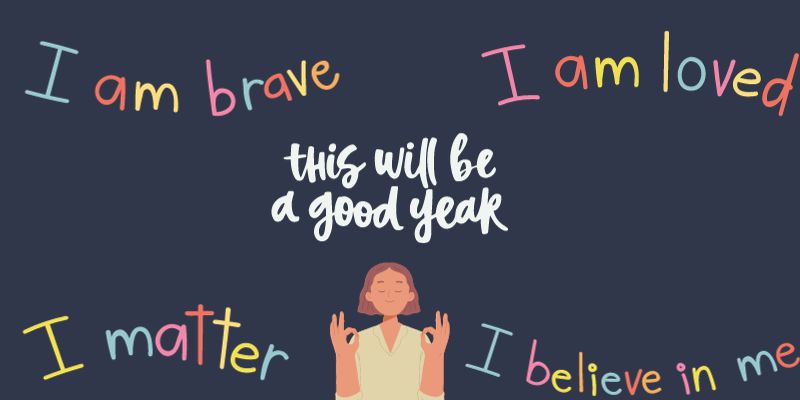
Displaced Anger: Everything You Need To Know
Displaced anger is a common yet often misunderstood aspect of human emotion.
Have you ever been upset about something seemingly small, only to realize that the intensity of your emotion is disproportionate to the situation?
You’re not alone. Displaced anger occurs when the frustration or anger we feel about one thing gets redirected toward something or someone else.
In this blog, we’ll explore the complexities of displaced anger, diving into why it happens and how it manifests in our daily lives.
We’ll explore real-life examples to make sense of displaced anger, shedding light on the psychological mechanisms involved.
Understanding anger is all about improved emotional intelligence, healthier relationships, and greater self-awareness.
So, if you’ve ever felt confused by your emotional reactions or wondered why someone close to you seems to express anger about seemingly unrelated issues, join us as we explore the topic of displaced anger in detail.
What Is Displaced Anger?

Displaced anger is a psychological phenomenon where the frustration or anger someone feels about a particular situation or individual is redirected toward a different target.
It’s like a misdirected emotional response, where the intensity of one’s feelings doesn’t align with the actual trigger.
At its core, displaced anger often arises when individuals are unable to express or confront the source of their frustration. Instead, these emotions get displaced onto something or someone more accessible, leading to seemingly disproportionate reactions.
For example, a stressful day at work might result in frustration that gets expressed as anger towards a family member or friend.
Signs of Displaced Anger

Displaced anger can manifest in various signs, indicating that the emotion is directed towards situations or individuals unrelated to its cause. Recognizing these signs is crucial for understanding and addressing displaced anger effectively.
Here are key indicators that may signal the presence of displaced anger:
- Irritability: Feelings of constant irritation or annoyance, often disproportionate to the situation.
Outbursts in Unrelated Situations: Expressing anger or frustration when the emotional response seems excessive or unrelated to the present circumstances. - Difficulty in Expressing Vulnerability: A tendency to mask more vulnerable emotions, such as sadness or fear, with outward expressions of anger.
- Chronic Criticism: Engaging in persistent criticism of others, possibly to vent unresolved anger.
Passive-Aggressive Behavior: Indirectly expressing anger through subtle, non-confrontational actions, making it challenging to address the underlying issue. - Physical Symptoms: Physical manifestations of stress and anger, including clenched fists, increased heart rate, or muscle tension.
- Escapist Behavior: Engaging in activities to avoid confronting the real source of anger, such as excessive work, substance use, or isolation.
- Difficulty in Forgiveness: Holding onto grudges or an inability to forgive, even for minor issues.
Relationship Strain: Experiencing challenges in interpersonal relationships due to unresolved anger being projected onto others. - Self-Blame: Internalizing anger and directing it inward, leading to feelings of guilt or self-blame.
Recognizing these signs provides valuable insight into displaced anger, paving the way for constructive strategies to address its root causes and promote emotional well-being.
Causes of Displaced Anger
Displaced anger, a complex emotional response, can be triggered by various underlying causes. Understanding these root factors is essential for effectively addressing and managing displaced anger.
Here are some common causes that contribute to the displacement of anger:
- Past Trauma: Unresolved trauma from past experiences, such as childhood abuse or neglect, can resurface as displaced anger in unrelated situations.
- Unmet Needs: When essential emotional or psychological needs go unmet, individuals may redirect their anger to cope with frustration, disappointment, or helplessness.
- Grief and Loss: The process of grieving, especially when not adequately addressed, can result in displaced anger as individuals struggle to navigate the complex emotions associated with loss.
- Workplace Stress: High levels of stress in the workplace, coupled with feelings of powerlessness or unfair treatment, can lead to displaced anger expressed in unrelated areas of life.
- Relationship Issues: Difficulty in relationships, whether romantic, familial, or social, can contribute to displaced anger as unresolved conflicts spill over into other aspects of life.
- Mental Health Conditions: Conditions such as depression, anxiety, or personality disorders may exacerbate displaced anger, making it more challenging to manage and redirect.
- Substance Abuse: The use of substances to cope with stress or emotional pain can intensify displaced anger, creating a cycle of negative emotions.
- Low Self-Esteem: Individuals with low self-esteem may struggle to express their needs and emotions directly, leading to the displacement of anger as an indirect means of communication.
- Cultural or Societal Factors: Societal pressures, discrimination, or cultural expectations can contribute to displaced anger as individuals grapple with external stressors.
- Lack of Emotional Regulation Skills: Difficulty regulating and expressing emotions appropriately can result in displaced anger, as individuals may struggle to cope with intense feelings.
Recognizing the specific causes of displaced anger is crucial for tailoring effective interventions and fostering emotional well-being. Addressing these root issues empowers individuals to manage anger healthier and build more fulfilling lives.
Consequences of Displaced Anger
The consequences of displaced anger can be far-reaching and impact various aspects of an individual’s life. Understanding these outcomes is essential for recognizing the urgency of addressing and managing displaced anger.
Here are some significant consequences associated with this complex emotional response:
- Strained Relationships: Displaced anger often leads to strained relationships with friends, family, and colleagues. Unintentional outbursts or passive-aggressive behavior can create tension and distance in interpersonal connections.
- Decreased Emotional Well-being: The continual experience of displaced anger can contribute to decreased emotional well-being. Persistent negative emotions may lead to stress, anxiety, and feelings of isolation.
- Impact on Mental Health: Displaced anger can exacerbate existing mental health conditions or contribute to the development of new issues, such as depression or mood disorders.
- Workplace Challenges: Expressing displaced anger in the workplace can lead to professional challenges, including conflicts with colleagues, difficulty collaborating on projects, and even jeopardizing one’s career.
- Physical Health Effects: The chronic experience of anger, significantly when displaced, can adversely affect physical health. It may increase blood pressure, cardiovascular issues, and other stress-related conditions.
- Self-Esteem Issues: Individuals grappling with displaced anger may experience self-esteem issues. The inability to express emotions constructively may lead to feelings of inadequacy and guilt.
- Coping Mechanisms: In an attempt to manage displaced anger, individuals may adopt unhealthy coping mechanisms such as substance abuse, overeating, or other addictive behaviors.
- Escalation of Conflict: Displaced anger can escalate conflicts in various situations as individuals struggle to manage their emotions. This escalation may result in verbal or physical confrontations.
- Impact on Decision-Making: The emotional intensity associated with displaced anger can impair decision-making abilities. Individuals may struggle to make rational choices, leading to potential negative consequences.
- Decreased Life Satisfaction: Overall, life satisfaction and happiness may be compromised when displaced anger is a persistent and unaddressed issue. It can hinder personal growth and fulfillment.
Recognizing and addressing the consequences of displaced anger is crucial for implementing effective strategies to manage and redirect this complex emotion.
Seeking support from mental health professionals, developing emotional regulation skills, and fostering open communication are key steps toward mitigating the negative outcomes of anger issues.
Examples of Displaced Anger
Examples of displaced anger provide insight into how this complex emotional response manifests in various situations. Understanding these examples can help individuals recognize and address displaced anger in themselves or others.
Here are some common scenarios illustrating displaced anger:
- Workplace Frustrations: A dissatisfied or frustrated person may express anger at home, targeting family members or friends instead of addressing the source of their work-related discontent.
- Traffic-Related Anger: Experiencing road rage, such as yelling at other drivers or becoming aggressive, can manifest displaced anger. The underlying stress or frustration is displaced into unrelated situations.
- Parental Pressures: A parent overwhelmed by challenges may express anger towards their children for minor issues. In this case, the anger is displaced from the stress and pressure of parenting responsibilities.
- Financial Stress: Individuals facing financial difficulties may displace anger onto their partners or family members. Minor disagreements about spending habits or budgeting can escalate into disproportionate expressions of anger.
- Personal Insecurities: Displaced anger can stem from personal insecurities. For example, someone feeling insecure about their appearance may express anger towards others, masking their insecurities with outward aggression.
- Social Frustrations: Feeling socially isolated or excluded may lead to displaced anger. An individual who perceives rejection or exclusion in social situations may express anger towards friends or acquaintances.
- Health Challenges: Coping with health issues can evoke anger, especially if the individual feels a loss of control. Displaced anger might be directed at caregivers, family members, or unrelated circumstances.
- Unmet Expectations: Frustration resulting from unmet expectations, whether in personal relationships or professional endeavors, can lead to displaced anger. Individuals may anger those around them instead of addressing the root cause.
- Past Trauma: Individuals with unresolved past trauma may displace their anger onto current relationships or situations. The emotional pain from past experiences may be expressed inappropriately, affecting present interactions.
- Generalized Dissatisfaction: A pervasive dissatisfaction with life can result in displaced anger. Everyday frustrations or disappointments may trigger intense anger reactions disproportionate to the immediate situation.
Recognizing these examples of displaced anger is crucial for promoting self-awareness and facilitating healthier emotional responses. Addressing the root causes of anger, seeking professional support, and developing effective coping strategies are essential to managing and redirecting displaced anger.
How to Control Your Displaced Anger?
Displaced anger, if left unmanaged, can negatively impact relationships and well-being. Controlling this complex emotion requires intentional efforts and effective strategies. Here are two key approaches to help individuals gain control over their displaced anger:
1. Anger Management
Anger management techniques provide practical tools to recognize, understand, and regulate anger responses. These strategies empower individuals to navigate their emotions more healthily. Key components of anger management include:
- Self-Awareness: Understanding the triggers and signs of anger is crucial. Anger management encourages individuals to reflect on their emotional responses, fostering greater self-awareness.
- Time-Outs: Taking a break from a heated situation lets individuals cool down and gain perspective. This pause prevents impulsive reactions, creating space for more thoughtful responses.
- Communication Skills: Learning effective communication is fundamental to anger management. Expressing feelings assertively, actively listening, and using “I” statements can enhance constructive communication.
- Problem-Solving: Addressing the underlying issues contributing to anger is essential. Anger management encourages individuals to identify solutions and implement problem-solving strategies.
Mastering Anger offers some of the most comprehensive and extensive online anger management classes. Some of them are listed as follows:
- Anger management training for employees
- Anger management classes for kids & teens
- Court approved anger management classes
Enroll in these classes to seek professional help in your anger management journey!
2. Psychotherapy
Psychotherapy, or counseling, is a valuable resource for individuals struggling with displaced anger. Professional therapists or counselors can provide personalized support and guidance. Key therapeutic approaches include:
- Cognitive-Behavioral Therapy (CBT): It helps individuals identify and challenge negative thought patterns contributing to anger. It provides practical tools to change destructive behaviors and enhance coping mechanisms.
- Mindfulness-Based Approaches: Mindfulness techniques promote staying present in the moment, reducing reactive responses. Practices like meditation and mindfulness-based stress reduction (MBSR) enhance emotional regulation.
- Exploration of Root Causes: Psychotherapy allows individuals to explore the root causes of their anger, including past traumas or unresolved issues. Understanding these underlying factors is crucial for long-term anger management.
- Skill Building: Therapists assist individuals in developing coping skills and alternative ways of expressing emotions. This includes exploring healthier outlets for frustration and stress.
By incorporating these approaches into their lives, individuals can gain control over displaced anger, fostering emotional well-being and healthier relationships. Seeking professional guidance can provide tailored strategies and support on this journey toward emotional regulation.
3. Stress Relief
Stress relief techniques play a pivotal role in controlling displaced anger. Managing stress can prevent the accumulation of tension that may contribute to anger outbursts. Here are effective stress relief strategies:
- Physical Activity: Engaging in regular physical exercise is a powerful stress reliever. Walking, jogging, or yoga helps release tension and promote overall well-being.
- Nature Connection: Spending time in nature has proven benefits for reducing stress. Whether walking in the park, hiking, or simply enjoying green spaces, nature has a calming effect on the mind.
- Hobbies and Leisure: Pursuing enjoyable hobbies provides a healthy escape from stressors. Whether reading, painting, or playing a musical instrument, engaging in activities that bring joy can alleviate stress.
- Social Support: Sharing feelings with trusted friends or family can provide emotional support. Having a strong social support system is crucial for managing stress and preventing the escalation of anger.
4. Breathing Exercises

Specific breathing exercises are an accessible and effective way to manage stress and control anger responses. Here are two popular breathing techniques:
- Deep Breathing: Inhale slowly through the nose, expanding the diaphragm, and exhale through the mouth. Deep breathing triggers the body’s relaxation response, reducing stress and promoting calmness.
- 4-7-8 Breathing: Inhale quietly through the nose for a count of four, hold the breath for seven, and exhale forcefully through pursed lips for a count of eight. This technique helps regulate breathing and induces a sense of tranquility.
Incorporating stress relief practices and regular breathing exercises into daily life can significantly contribute to controlling anger. These approaches address the immediate emotional response and promote overall mental well-being.
Experimenting with different stress relief methods and finding what works best for individual preferences can enhance the effectiveness of these strategies.
5. Take Time Out
Taking time out is a valuable strategy for controlling displaced anger. When emotions escalate, stepping away from the situation allows for a cooling-off period and prevents impulsive reactions. Here’s how to effectively implement this technique:
- Identify Triggers: Be aware of situations or stimuli that trigger anger. When these arise, consciously decide to take a break.
- Communicate: Let others know you need a moment to collect your thoughts and emotions. Open communication prevents misunderstandings.
- Find a Quiet Space: Move to a quiet, private space where you can relax and regain composure. This might be a separate room or a peaceful outdoor environment.
- Relaxation Techniques: Use this time to practice relaxation techniques such as deep breathing or visualization. Calming the mind contributes to a more composed emotional state.
6. Yoga
Yoga is a holistic practice that combines physical postures, breath control, and mindfulness. It is an effective tool for managing anger and promoting emotional balance. Here’s how yoga can be beneficial:
- Mind-Body Connection: Yoga emphasizes the connection between the mind and body, fostering self-awareness and self-regulation of emotions.
- Stress Reduction: The practice of yoga has been shown to reduce stress and anxiety, addressing underlying factors that contribute to anger.
- Physical Release: Engaging in yoga postures releases physical tension, providing a healthy outlet for the energy associated with anger.
- Mindfulness: Yoga encourages being present at the moment, preventing dwelling on past frustrations or worrying about the future. This mindfulness helps manage anger triggers.
Incorporating these techniques into daily routines offers practical tools for individuals struggling with displaced anger.
Taking time out and practicing yoga contributes to emotional regulation, providing a healthier response to challenging situations. Regular practice enhances overall well-being and supports a more balanced approach to handling anger.
7. Mantras

Using mantras is a powerful technique to control displaced anger and foster a positive mindset. Mantras are repetitive words or phrases that can be silently recited or chanted aloud. Here’s how mantras can be incorporated into anger management:
- Positive Affirmation: Choose a mantra that reflects positivity and calmness. Examples include “I am in control of my emotions” or “I choose peace and understanding.”
- Repeat Regularly: When anger arises, repeat the chosen mantra to yourself. Focus on the words and let them guide your thoughts away from negativity.
- Centering Tool: Mantras serve as a centering tool, bringing attention to the present moment. This prevents the escalation of displaced anger by redirecting the mind.
- Create a Routine: Establish a routine for using mantras, such as incorporating them into morning or evening rituals. Consistent practice reinforces positive thought patterns.
8. Practice Mindfulness
Mindfulness is a key component of anger management, helping individuals stay present and aware of their emotions. Here’s how practicing mindfulness contributes to controlling displaced anger:
- Awareness of Triggers: Mindfulness involves paying attention to the present moment without judgment. This heightened awareness allows individuals to recognize anger triggers as they emerge.
- Pause and Reflect: Mindfulness encourages a pause before reacting to a situation. This moment of reflection provides the opportunity to choose a measured response rather than reacting impulsively.
- Breathing Techniques: Mindful breathing, where attention is focused on each breath, is a core practice. This simple yet effective technique helps regulate emotions and promotes a sense of calm.
- Non-Judgmental Observation: Mindfulness involves observing thoughts and emotions without judgment. This non-judgmental stance reduces the emotional charge associated with displaced anger.
These techniques promote self-awareness, emotional regulation, and a positive mindset, fostering a healthier approach to handling challenging situations. Regular practice enhances overall well-being and contributes to long-term anger management.
9. Speak to Your Close Family Members
Communication is a cornerstone in addressing and controlling displaced anger. Speaking to close family members provides an avenue for expression, understanding, and support. Here’s how engaging in open communication with family members can contribute to anger management:
- Share Feelings: Expressing emotions is crucial. When feeling anger, communicate openly with family members about what triggered it. Articulating feelings helps both parties understand each other better.
- Active Listening: Encourage family members to share their perspectives as well. Active listening promotes empathy and fosters a supportive environment. Understanding each other’s viewpoints can reduce conflicts.
- Seek Solutions Together: Instead of placing blame, work collaboratively to find solutions. Discussing and implementing constructive changes can address the root causes of displaced anger, creating a more harmonious family dynamic.
- Establish Boundaries: Communicate boundaries and expectations within the family. This ensures that everyone is aware of individual needs and respects personal space, minimizing potential triggers for anger.
- Create a Safe Space: Foster an atmosphere where family members feel comfortable expressing their emotions without fear of judgment. A safe space encourages openness and enables constructive dialogue.
By fostering understanding, empathy, and collaboration, family members can collectively contribute to a more positive and supportive environment, reducing the likelihood of anger-related conflicts.
Frequently Asked Questions
How do you deal with someone who has displaced anger?
Dealing with someone who has displaced anger involves promoting open communication, encouraging self-reflection, and suggesting constructive outlets like therapy or anger management programs.
Are displaced anger and misplaced anger the same thing?
Displaced and misplaced anger are terms often used interchangeably to describe the redirection of anger toward a target other than the source of frustration or conflict.
Conclusion
Understanding and addressing displaced anger is essential for fostering healthy relationships and personal well-being. As we explored the causes, signs, and consequences of displaced anger, the importance of effective coping mechanisms and interventions was highlighted in this blog.
Recognizing that displaced anger can have a disastrous impact on mental, emotional, and physical health, it becomes essential to cultivate strategies for control and redirection.
Stress relief techniques provide a foundational pillar, helping individuals navigate the pressures that often contribute to the displacement of anger. Incorporating anger management exercises, yoga, and taking time out creates a space for self-reflection and emotional regulation.
Moreover, addressing displaced anger may extend to seeking professional support through psychotherapy. This therapeutic intervention offers a structured space to explore the root causes of anger, develop coping mechanisms, and foster a deeper understanding of oneself.
Addressing displaced anger is a personal journey that shapes the dynamics of relationships and individual well-being.
By embracing a holistic approach to managing and redirecting anger, individuals can pave the way for healthier interactions, improved mental health, and a more harmonious existence.





Responses